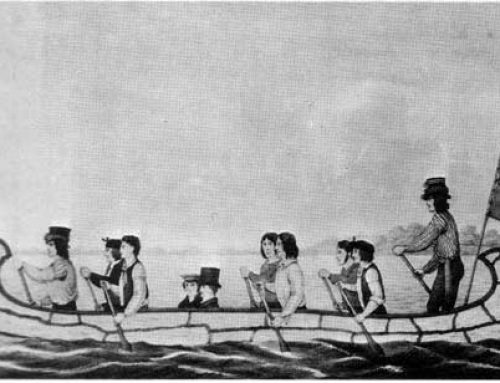
North American environment: The north
Most of North America was (and is) just not very good for people to live in. That’s why not that many people lived in North America before 1500 AD. In the north, it’s too cold to support very many people. The winters are too long to grow crops, and there isn’t enough plant life growing wild to support people unless there is a lot of land for each person.
In the south-west, there are huge deserts, and even most of the way up the Pacific coast (in what is now California) it is generally too dry for farming. You can only farm that land by using irrigation, and that’s what the early Pueblo people did.

North American environment: The Oregon coast near Cannon Beach
In the middle of the continent, the Great Plains are grassland good for herds of animals like bison, but mostly still too dry for farming without irrigation. Not very many Native people lived there. In the Rocky Mountains, also, the soil was no good for farming, and people like the Ute lived by hunting and gathering.
Along the Mississippi Valley and the Atlantic coast, there was good farmland, and there people like the Mississippians, Iroquois, Sioux, and Cherokee farmed sunflowers, corn, and beans. A lot more people lived there. In the Pacific Northwest, the salmon runs could feed lots of people even without farming, and Chinook and other people lived there in towns.

North American geography: The Great Plains
But you shouldn’t think from this that the environment was always the same, never changing. In fact it did change a good deal between the last Ice Age (about 12000 BC) and 1500 AD. That was partly because of natural factors and partly because of things people did. During the Ice Age, when people crossed over the land bridge from East Asia, North America was partly covered with glaciers.
All of the northern part of North America lay under thick sheets of ice, all year round. The ice reached all the way south of the Great Lakes, and covered most of New York State. The Rocky Mountains had glaciers on them too. In the part of the land that wasn’t covered by glaciers, there were a lot of very big animals like mammoths and a huge kind of bison, as well as early horses and camels. Historians call this the Paleo-Indian period.

North American environment: A herd of bison
With the end of the Ice Age, about 10,000 BC, the glaciers melted and shrank. After a while the glaciers only covered the most northern part of North America (and a little of the Rocky Mountains and other mountains). The climate became warmer all over North America. There was less grass for the big animals to eat. Most of them became extinct, including the mammoths, the big bison, and all of the horses and camels.
On the other hand, new animals like the cattle that became the American bison, and the dogs that came with people (and the people themselves), moved in from East Asia. The new people and American bison also helped kill off the horses and camels.

North American geography; Arizona rock formations
People who had moved to North America to hunt the mammoths needed to find new ways of getting food in this Archaic period. They learned to hunt bison, and eventually they learned to farm corn and beans. But they also destroyed some forests by burning the wood for their fires. Some scientists think that the reason the Southwest (southern California, Arizona, and New Mexico) is so desert-like is that the people living there changed the landscape by cutting down all the forests for fuel.
In other places, people learned to manage the landscape so it would produce enough food for them and be convenient to move around in. The Chinook, for instance, set huge fires on purpose to burn out the undergrowth in the forests, and to allow new grass to grow on the prairie. They hunted the buffalo, and the passenger pigeon, to control the size of the herds and flocks. So the environment of North America, by 1000 AD, was a very carefully managed, human-controlled situation.

A waterfall in what is now the south-eastern United States
About 1000 AD, though, a global warming period all over the Earth began to warm up North America too (though not as much as global warming is warming the earth right now). A lot of people in North America moved further north, following the familiar climate that they knew how to live in. The Sioux moved north from South Carolina up to Ohio, and the Iroquois moved north from Maryland to New York.
Their move may have pushed the Iroquois’s northern neighbors, the Algonquin, further north and west. At the same time, the Vikings took advantage of ice-free oceans to sail from Europe to northern Canada in search of walrus ivory. As a result, Inuit people migrated to eastern Canada to trade with them.
By 1300 or 1400 AD, the pattern had reversed and the world was getting cooler. People began to move south instead of north. The Vikings left Canada (maybe just because they found better sources of ivory in Africa). The Pueblo and Navajo and Apache people moved south into modern Arizona and New Mexico. The Inuit moved south into southern Greenland and Newfoundland.




